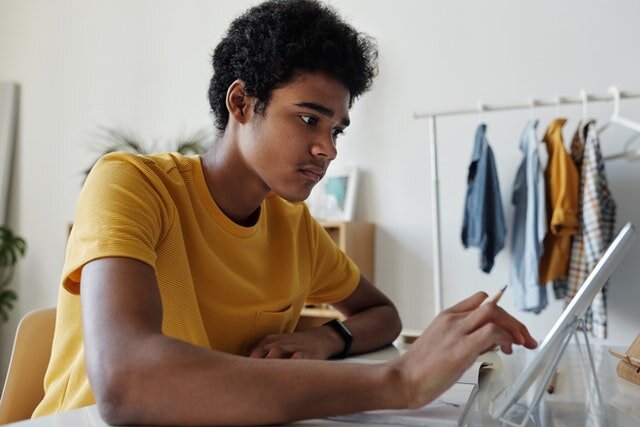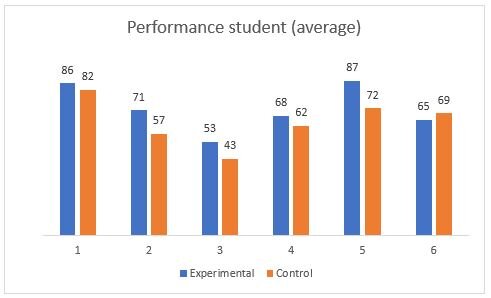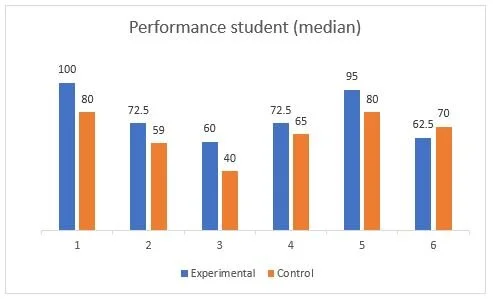“Flipped classroom is the pedagogical approach that best adapts to the ‘new educational normality.’”
The pandemic caused by COVID-19 has put digital technologies front-and-center as an essential part of the teaching and learning processes. Millions of students suddenly had to move from a face-to-face learning environment to a virtual one. With the imminent arrival of the “new educational normality,” virtual education will be one strategy that guarantees the continuity of academic programs in educational institutions. Flipped Classroom is a learning methodology characterized by potentializing the virtual learning spaces; therefore, it is one of the methods that is adapting best to this “new educational normality.”
The flipped classroom is a strategy that turns the traditional learning environment upside-down. The course contents are learned outside the school, while the assignments or activities are implemented collaboratively during the class. The students receive the course’s theoretical concepts through videos designed or monitored by the professor so that during the class, the teacher can implement meaningful learning activities and delve deeper into the contents of the course.
It is common that when doing an Internet search, we likely review the first video that the query gives us. The students do the same thing. However, how can they know that what appears in that video is correct? How are they sure it is just what the teacher is looking for them to learn? To address this problem, professors must monitor the videos that students consult for class content or create specific materials for their courses, where they address contextualized examples and use language appropriate for professional formation. In this article, we aim to demonstrate how useful it is for students when mathematics syllabuses include video created by their teachers.
“The use of teacher-created videos and the implementation of the flipped classroom methodology have a favorable impact on learning outcomes and student achievement.”
It is important to remember that video is one of the primary resources used in the flipped classroom. However, one can also use other electronic resources such as the “screen sharing” function of the Zoom app, the Storytelling methodology, simulations, e-Books, and electronic magazines, among others.
In this article, we intend to fortify the research carried out by Baki (2016), Barros & Martínez (2018), and Jordán, Pérez, & Sanabria (2014) comparing the performance of the students in a traditional classroom vs. the performance of students experiencing flipped classroom methodology.
Below, we present the research work in a Mathematics II course for undergraduate students at Tecnológico de Monterrey.
-
Creation of audiovisual material. We created enough videos to cover the entire course. We used the criteria considered in Grajeda & Benítez (2018), such as the drafting of problems, the definition of variables, and the application of the problem. Full videos are on YouTube channel Mathematics with Grajeda.
-
Implementation of the flipped classroom in an experimental group. The videos created were used with the experimental group. All the sessions were similar. We asked the students to watch the video at home of the topic for the next class, take notes, summarize, or resolve the exercises presented in the video. In class, we answered questions about the videos and worked supplementary exercises with the students on the blackboard. The remaining time in class was for students to practice what they had learned and delved into the topics.
-
Contrast the experimental group with the control group. At different times of the course, we measured the students’ performance in the experimental group and contrasted it with the performance of the control group. In both groups, the performance of the students was measured through an exam that tested knowledge. The range of the test was 0 to 100, and the minimum passing score was 70.
In the first analysis, we used the median to interpret the results. Figure 1 shows that the experimental group’s median is higher than that of the control group in the first five evaluations. This means that 50% of the students’ best grades in the experimental group were better than 50% of the best grades obtained by students in the control group.
These results show that using videos created by the teachers to cover the disciplinary contents of the mathematics course had a favorable impact on student learning.
Image 1. Median values of the students in the course evaluations.
If we look closely at the results of evaluation number six (which is the final exam), they are not consistent with the results of the previous five evaluations. How to explain this result? It is difficult to prove it, but we think it is due to the students’ attitudinal behaviors. The final exam is an assessment that is applied one week after the course ends and corresponds to 20% of the final grade. By this time, 39% of the students in the experimental group had passed the final exam, compared with only 21% in the control group. The rest could estimate what they needed to score on the final exam to pass the course. This produces a relaxation or lack of attention among students who have obtained good grades during the course. It requires additional concentration or effort from those who have not achieved good grades and must make a good mark on the final exam to pass the course.
We consider that these attitudes of relaxation and the lack of concentration reflect in the evaluations of the final exam and, to some extent, may explain why the results obtained in the control group and the traditional group are reversed.
Figure 2 shows a secondary analysis of average student performance. Except for the final assessment, which, as mentioned above, has some attitudinal aspects of students that are difficult to measure, the students in the experimental group seem to have a better average performance than the students in the control group.
Image 2. Average student performance in the course assessments.
Based on these results and analyses, we conclude that the use of videos created by the professors and the flipped classroom method has a favorable impact on the students’ learning outcomes and performance.
The implementation of innovative learning methodologies and the use of technology allow the professors to design solutions to enrich their students’ learning process. We invite you to explore these options in your teaching practices and share your results with the Observatory of Educational Innovation.
About the authors
Rafael Benítez Medina (rafael.benitez@tec.mx) holds a Bachelor’s degree in Physics and Mathematics and a master’s degree in Mathematics. He is currently a plant professor at the Tecnológico de Monterrey, Santa Fe Campus. Professor Benítez has participated as a speaker in various national and international congresses about educational innovation. He has a research article in the area of mathematics and several publications about educational innovation.
Jesús Grajeda Rosas (mc.jesusgr@tec.mx) has a Master’s of Science degree with a specialization in Educational Mathematics. He is a chair professor at Tecnológico de Monterrey, Santa Fe Campus. He has given presentations at national and international levels.
References
Baki, K. (2016). The effect of using flipped classroom instruction on students’ achievements in the new 2016 scholastic assessment test of mathematics skills in the United Arab Emirates (Master Thesis). United Arab Emirates University, United Arab Emirates
Barros V. y Martínez M. (2018). Aula invertida en la enseñanza del álgebra en la educación superior. Espirales. Revista interdisciplinaria de investigación. 2(13). 12-23.
Jordán C., Pérez M. y Sanabria E. (2014). Investigación del impacto en un aula de matemáticas al utilizar flipped educación. Revista. Pensamiento matemático, 4(2). 9-22.
Grajeda J., Benítez R y Morales S. (2018). Reflexiones sobre el efecto del uso de videos direccionados en cursos de matemáticas para licenciatura en el Tecnológico de Monterrey. Memorias del Congreso Internacional de Innovación Educativa, 1652-1656.
Matemáticas con Grajeda. Retrieved April 27, 2020 from https://www.youtube.com/channel/UCX-9il8XGlV6kkrIVyTdWQQ
Reporte: Edu Trends (2014). Flipped Learning. Observatorio de Innovación Educativa of Tecnológico de Monterrey.
Editing by Rubí Román (rubi.roman@tec.mx) – Observatory of Educational Innovation.
Translation by Daniel Wetta.
This article from Observatory of the Institute for the Future of Education may be shared under the terms of the license CC BY-NC-SA 4.0 
)
)



)